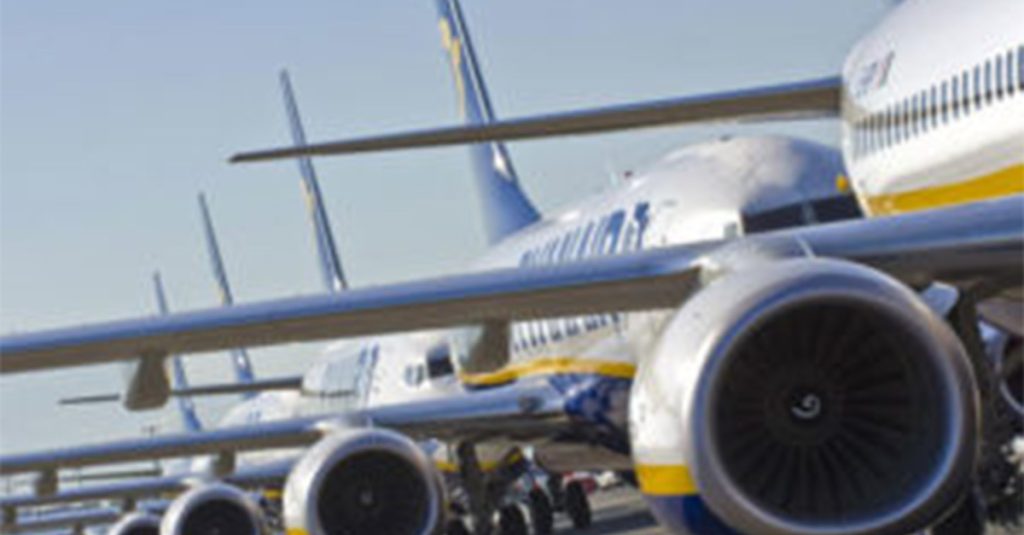In a remarkable milestone, Ryanair achieved record passenger numbers last month, carrying 20.5 million passengers. This surge, however, came at a cost with fares being 5% lower than in 2023.
Ryanair’s strategic decision to lower fares was driven by consumer demand pressures. This strategy resulted in an 8% increase in passenger numbers compared to August 2023, despite the financial implications for shareholders.
Record-Breaking August for Ryanair
Ryanair’s August performance was nothing short of extraordinary. By carrying a record 20.5 million passengers, the airline saw an 8% increase from the previous year. This achievement highlights Ryanair’s successful efforts to boost travel demand amid consumer pressure.
Despite the passenger growth, ticket prices were 5% lower compared to 2023. Michael O’Leary, Ryanair’s group chief executive, explained to Sky News that this pricing strategy was crucial in stimulating demand in a challenging economic environment.
O’Leary disclosed that fares might not return to 2023 levels until the summer of 2025, indicating a long-term strategic shift in how Ryanair approaches pricing and demand stimulation.
Load Factors and Financial Implications
Ryanair reported a load factor of 96% for the month, matching August 2023, indicating strong demand and efficient seat occupancy. Such high load factors are a testament to Ryanair’s operational effectiveness in maintaining passenger volumes.
For the broader year ending August 2024, Ryanair’s passenger numbers rose to 192 million, an 8% increase compared to the same period in 2023. The yearly load factor held steady at 94%, demonstrating continued efficiency.
These numbers, while impressive, reflect a balance Ryanair must manage between keeping fares low enough to attract customers and ensuring financial returns for its shareholders.
Comments from Competitors—Wizz Air and Norse Atlantic
Ryanair was not alone in its August success. Wizz Air also reached new heights by transporting a record 6.2 million passengers, resulting in a 1% year-over-year increase.
Despite a minor year-over-year decrease in operated seat capacity due to engine-related issues, Wizz Air achieved a load factor of 95.4%, showcasing its resilience and adaptability.
Norse Atlantic followed suit with a 26% increase in passenger numbers, reflecting a consistent upward trend across the aviation industry. Its 87% load factor highlights the appeal of its value proposition in current market conditions.
Strategic Adjustments and Market Influence
The trend in increased passenger numbers and lower fares by Ryanair underscores the current economic pressures on consumers. Ryanair’s strategic shift to lower fares reflects a broader trend in the travel industry, where businesses adapt to fluctuating market dynamics.
This approach has encouraged competition. Notably, the budget market has seen airlines such as Ryanair and Wizz Air responding agilely to market conditions, seeking an edge in attracting passengers.
Such strategic adjustments, while beneficial to passengers, raise questions regarding long-term financial sustainability and shareholder satisfaction.
Industry Insights and Future Projections
Michael O’Leary’s insight into fare adjustments signals potential shifts in the industry landscape. His anticipation that fares won’t equilibrate until 2025 suggests a redefined approach to pricing strategies.
The industry is watching closely as these changes unfold. Ryanair’s approach sets a benchmark for efficiency and adaptability that other airlines may follow in attempting to balance affordability and revenue.
The competitive dynamic between key players like Ryanair, Wizz Air, and Norse Atlantic will likely shape future pricing models and market strategies in the aviation sector.
Implications for Passengers and Shareholders
For passengers, Ryanair’s current pricing approach presents more affordable travel opportunities, leading to increased access and travel volume.
However, these benefits come with financial implications for shareholders, who may experience reduced returns due to the lower fare policy.
The challenge will be maintaining a balance where operational profitability is sustained without alienating investors. Ryanair’s strategy serves as a focal point for discussion on this key industry issue.
Summary and Reflection
The aviation sector’s current climate is marked by increased passenger numbers and strategic fare reductions. Ryanair’s adaptation to these conditions reflects broader industry trends.
As the sector evolves, these strategies will play a crucial role in shaping the future of air travel, both in terms of pricing and operational models.
Ryanair’s record-setting passenger numbers in August highlight a strategic pivot towards lower fares to stimulate demand. As the aviation industry navigates these changes, Ryanair’s approach may offer a blueprint for balancing customer attraction with financial viability.

